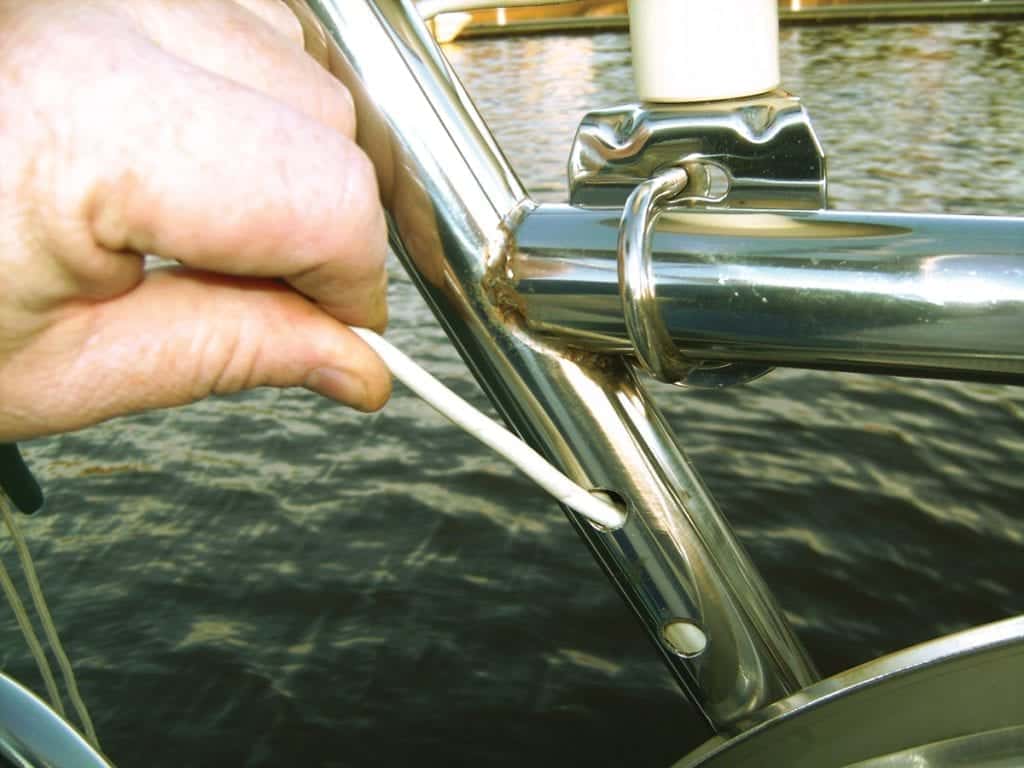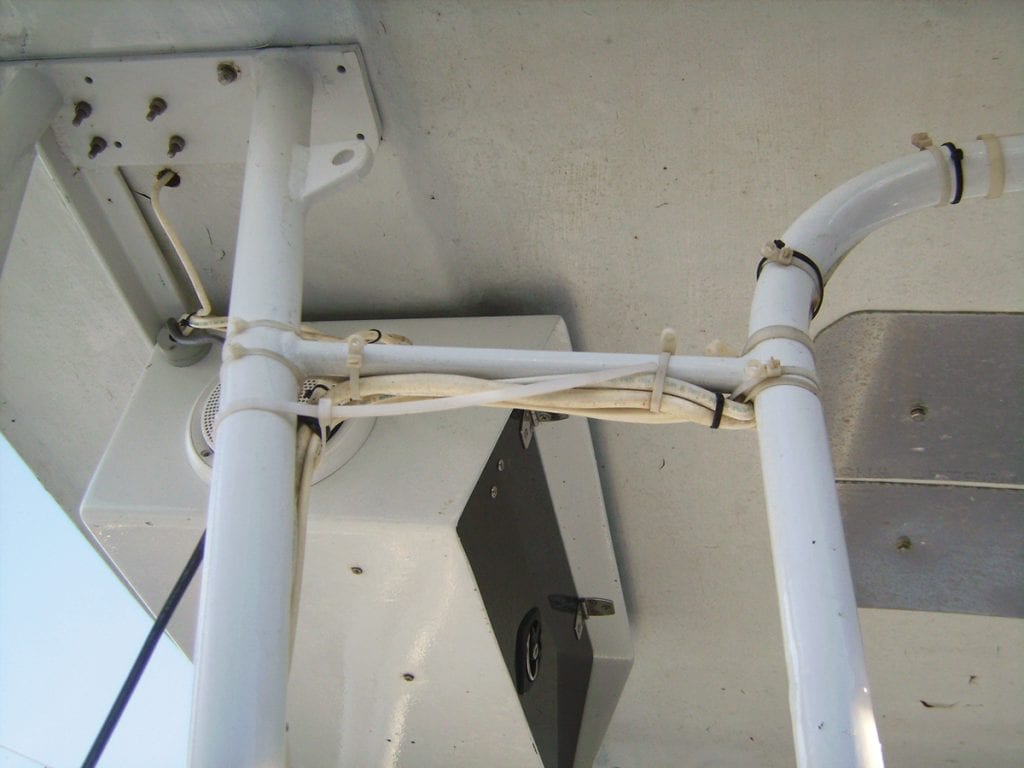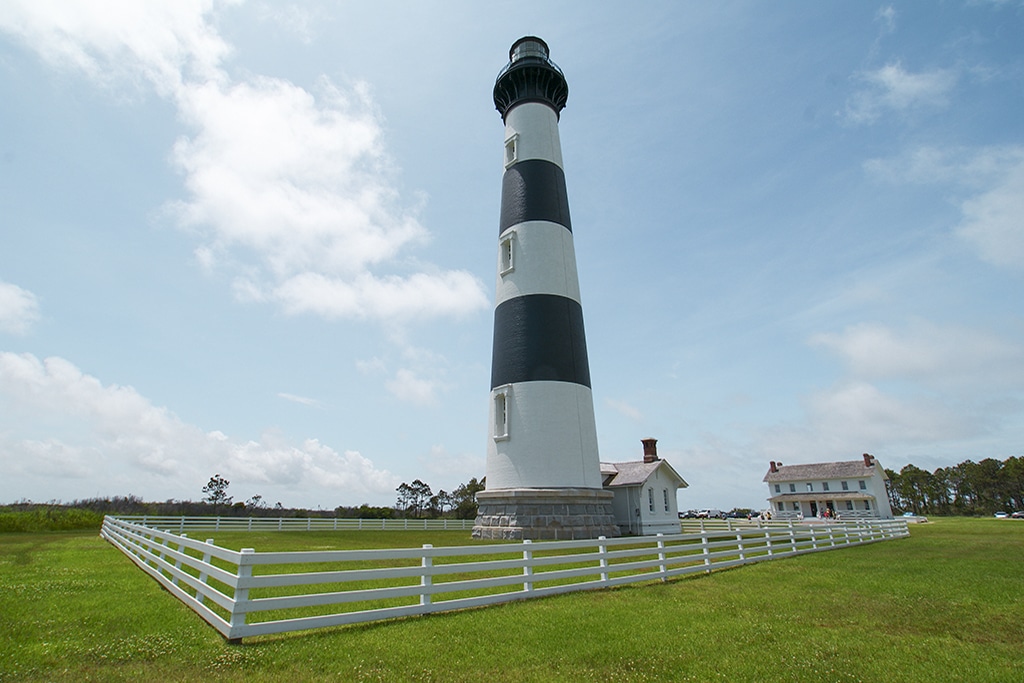How to Wire a T-Top
Here’s how to wire a T-Top and free up console space.
While there never seems to be enough space on boats, the dilemma is particularly true for owners of small to midsized center consoles. With the explosion of must-have electronic doodads on the market today, owners seem to find themselves constantly struggling with limited installation options for even the basics: VHF radios, GPS units, multifunction displays, etc.
Center consoles equipped with a T-top provide additional mounting options and owners typically take advantage of this new real estate by installing an overhead electronics box. The hardest part for most DIYers tackling this project will be routing the cables and wires to the new box. Some take the easy way out by simply fastening wire bundles and cables to the outside of the tubing, but routing them internally provides both protection and a neater, more professional-looking installation.
The Basics of wiring a T-top
Routing wires through the maze of aluminum or stainless steel tubing may look like the water-born equivalent of a Rubik’s Cube, but with a little planning, it’s fairly straightforward if you simply step back and visualize the installation prior to starting. Once you’ve planned the route and (as necessary) drilled your entry and exit holes, the next step is installing the wires. While there are a number of options available for pulling wires when you wire a T-Top, the most common one is using an electrician’s “fish tape” or snake.
Snakes must be stiff enough to maintain their shape while pushing, yet supple enough to twist around curves and sharp bends. Snakes made of tempered wire are commonly used and can be purchased at most hardware stores; however, newer, more flexible units of fiberglass or other composite materials also are available.
Like this DIY project? Here’s how to install rod holders on your center console.
Regardless of which style you choose, the snake’s ability to make the turns and bends easily reduces or eliminates the number of additional holes needed to facilitate installation. The first step is feeding the snake through with no wiring attached. Once this is completed, attach the cable or wire bundle to the bitter end of the snake as streamlined as possible with tightly wrapped electrical tape so the wires can make it through the piping without too much difficulty.
When you wire a T-Top, carefully pull the bundle through and gently manipulate it around bends. In addition to wire snakes, other options I’ve used with varying degrees of success range from weighted strings to using a shop vac. The former involves simply feeding a string weighted with a sinker or small washer into the top hole of the tubing. Let gravity carry it down to the exit hole. For the shop vac trick, tie a piece of tissue, cotton ball or a foam earplug to the string. Then, feed it into the top hole while holding the shop vac intake hose at the bottom hole (you may have to use duct tape to get a good seal). When you have the string through, use it to thread a pull wire, such as heavy fishing line or weed-wacker filament, to pull the wires through.
Drilling Tips
At some point during your installation, you may have to drill some holes, either at an electronics box or at individual mounts. For wire runs with multiple turns, it may also be necessary to drill a small pilot hole at the second turn (depending on how sharp it is) to guide the snake along the correct path. Aluminum is softer and easier to drill than stainless steel; however, you’ll want to use a metal center punch to prevent the drill bit from walking as you start drilling.
Use a good quality, sharp drill bit for the best results. If larger diameter holes are required, a hole saw may be a better option. In either case, slower drill speeds will provide more control. Drill holes in areas of low mechanical stress where possible. Drill in horizontal tubes, and remove sharp edges using a deburring tool or rat tail file to prevent damage to wire insulation while pulling.
Wire Pulling 101
When pulling wires, use a firm, steady motion and always pull at the flattest angle possible to the tubing to reduce friction. This approach also puts less stress on the wire and minimizes the chance of tearing or damaging the wire. A solution of soapy water can be applied (to allow the wires to slip through the tube with minimal resistance); however, some folks worry that soap can ruin the insulation or possibly cause corrosion. A better idea is to purchase special wire pulling lubricant, such as 3M’s Wire Pulling Lubricant Gel.
When you wire a t-top with larger wire bundles, you may want to stagger the wires where attached to the snake. This both reduces the profile of the joint and makes it easier to pull around tight bends. Finally, include and leave an extra pull string in place when pulling the wire bundle to assist with future installations.
By Frank Lanier, Southern Boating
June 2019














